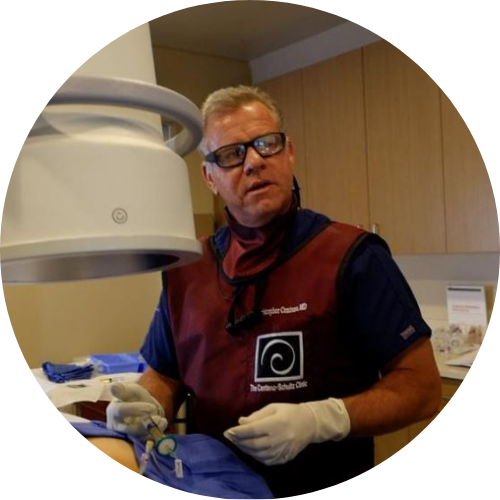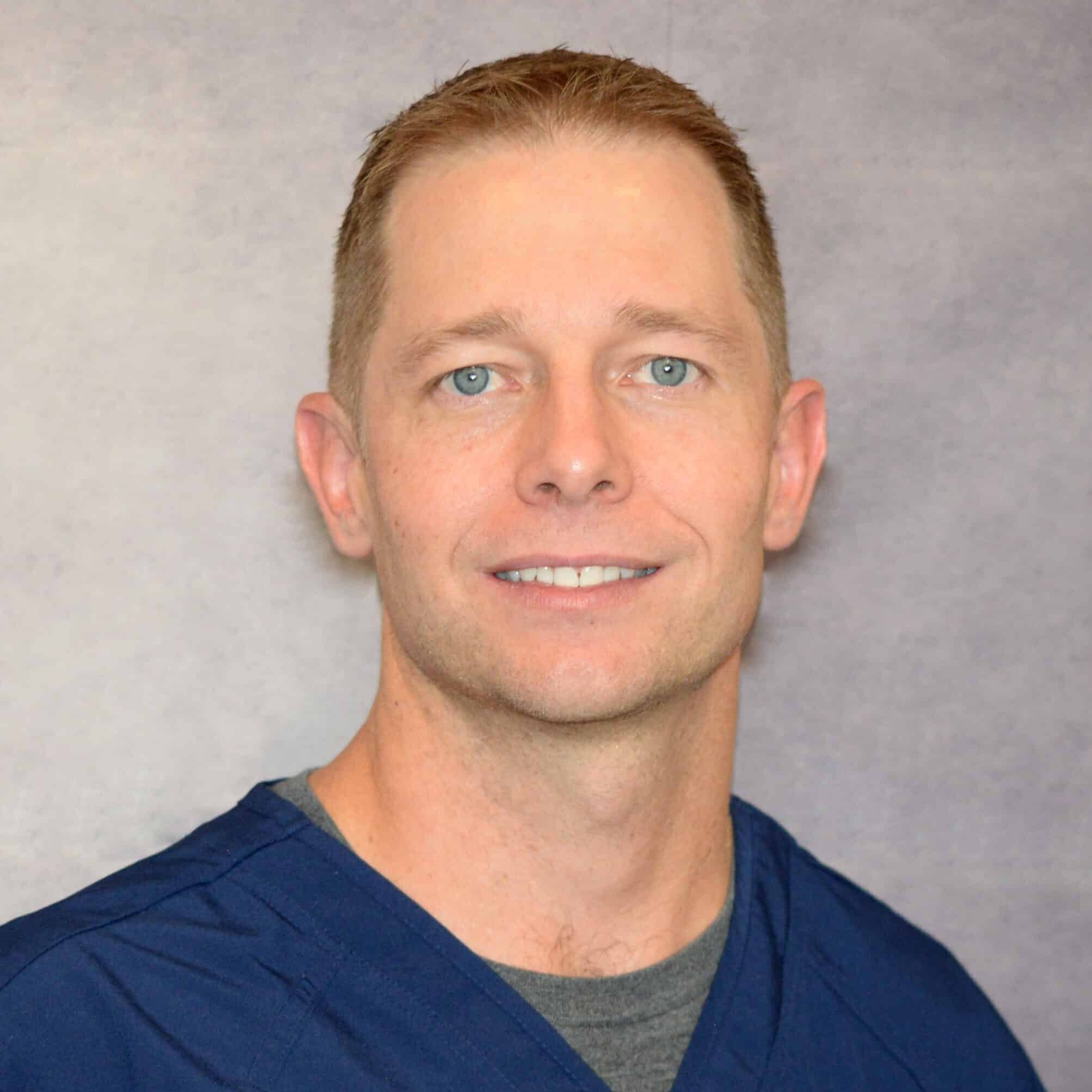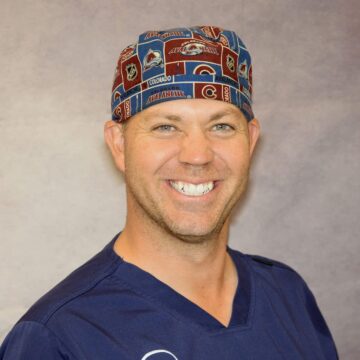PRP for Hip Labral Tear
Am I a Candidate?Have you been diagnosed with a hip labral tear? Told you may need to have surgery? Did you know there are ways to treat your labral tear without surgery by stimulating your body to heal itself? Learn how PRP can be used to treat hip labral tears.
What Is a Hip Labral Tear?
The hip labrum is a ring of fibrocartilage attached to the socket of the hip, or acetabulum. It provides stability and deepens the joint. The hip labrum is susceptible to injury and can tear. Tears are thought to be from gradual wear and tear, trauma, congenital malformation (dysplasia), impingement, and joint laxity.1
Pain from a labral tear can start suddenly or develop gradually. The pain is usually in the front of the hip or groin but may radiate to the buttocks side of the hip or down the front of the leg.
Typically, the pain is usually dull but sometimes can be sharp or stabbing. It is usually made worse with walking, pivoting, running, and prolonged sitting. Hip labral pain can sometimes significantly impact sports and activities of daily living and be miserable to live with.
If conservative treatment measures, like rest, activity modification, physical therapy, and over-the-counter medications don’t resolve the issue, invasive surgery is often recommended. Surgery has a long recovery and many risks, so many patients seek or would prefer safer alternatives to surgery.
What Is a PRP Injection?
PRP stands for platelet-rich plasma and involves obtaining blood from a vein in a simple blood draw, centrifuging (spinning) that blood to separate the components, then isolating and concentrating the platelets.
Platelets are cell fragments in the blood that contain many growth factors or messages that can stimulate repair in tissue, similar to how a skin wound heals itself. Doctors can take advantage of these characteristics of platelets by putting a high concentration of them directly into damaged tissue, where a limited blood supply has led to limited self-healing.
PRP can be directly injected into many orthopedic tissues such as joints, tendons, ligaments, meniscus, labrum, intervertebral disks, etc to stimulate more repair than is possible naturally since these tissues have poor blood supply.
At the Centeno-Schultz Clinic, we use specialized lab personnel to make PRP, so we can concentrate more platelets and customize the treatment to each patient for better outcomes. We also use image guidance (ultrasound and or X-ray) to ensure the most accurate and safe placement of PRP to improve clinical results.
When Is PRP Injection Advised for Hip Labral Tear?
PRP is typically recommended when a patient has a painful hip labral tear that has failed conservative treatments such as rest, activity modification, physical therapy, heat, etc.
PRP works best for patients with non-detached labral tears, younger than 50, with no arthritis or just mild arthritis, and no severe hip dysplasia. PRP can help patients avoid surgery, get out of pain, and get back to the activities that they love to do.
How Is the PRP Procedure Performed?
For the procedure, the patient will have a blood draw as they typically would for a blood test. More blood will be taken than with most labs so we have enough to concentrate the platelets down to an effective dose. After the blood draw, the patient will return a few hours later, once the blood is processed for the actual injection.
If the patient is nervous or sensitive to needles, medication can be given orally or intravenously for relaxation and pain relief for the procedure. The patient will lie down on the procedure table and will be cleaned and draped to keep the targeted area sterile to prevent infection.
If the patient is nervous or sensitive to needles, medication can be given orally or intravenously for relaxation and pain relief for the procedure. The patient will lie down on the procedure table and will be cleaned and draped to keep the targeted area sterile to prevent infection.
If the patient is nervous or sensitive to needles, medication can be given orally or intravenously for relaxation and pain relief for the procedure. The patient will lie down on the procedure table and will be cleaned and draped to keep the targeted area sterile to prevent infection.
The patient will be given anti-inflammatory pain medication for a few days to help with any pain. Once the initial soreness calms down in a few days, patients should immediately get into pain-free movement/rehab/physical therapy and should expect to slowly improve over two to six months.
Benefits of the Procedure
PRP can greatly improve a patient’s pain and function after having a hip labral tear.
The many benefits of PRP to treat labral tears include:
- Safety: There is little risk to PRP injections and they do not alter a patient’s anatomy, compared to hip surgery, which can damage the hip ligaments making the hip more unstable.
- Little downtime: Most patients can walk and function normally right after a procedure with just soreness or limited activity for a few days. With hip surgery, there is usually more restriction for weeks and recovery takes much longer.
- Lasting results: PRP stimulates actual healing for long-term benefits rather than short-term pain management only.
- Reduced pain: PRP reduces hip pain.
- Improved function: Patients are typically able to increase their activity within two to six months after PRP injections. Most patients will get back most or all of their pre-labral injury function, depending on their age, severity of injury, and response to treatment. After hip surgery, by comparison, it can sometimes take one or two years for a patient to be able to get back to most of their desired activities.
Potential Risks and Complications
PRP injections are very safe, but all medical procedures have some risks. PRP is much safer than any hip surgical procedure as all surgeries create some tissue damage.
- PRP itself comes from the patient, so there are no risks of allergic reaction or rejection.
- Any injection has a small risk of infection, but this is extremely low when performed with sterile techniques.
- Any injection has a risk of bleeding or bruising, which is uncommon and is usually mild and self-resolving.
- Any injection has the risk of increasing pain temporarily from the actual injection. PRP also causes a healing response in which the first step is inflammation. That results in pain, swelling, and heat, which are normal and to be expected for a few days or up to a week.
- Any injection has the risk of damaging any nearby structures, but using image guidance mitigates this risk.
- No medical procedure is 100% effective, including PRP. Success rates for PRP can be 70-85%. There is a chance the PRP does not help the labral tear enough and additional treatment or surgery may be required. If surgery were later required.
PRP would not be a negative for surgery and likely would be a net positive. This is opposed to steroid injections performed before surgery, which can increase the risks of surgical complications and infections.
Success Rate and Efficacy
We have seen many patients achieve clinical improvements in pain and function with PRP treatments for hip labral tears.
There are also several publications on PRP helping to treat patients with hip pain and labral tears. A 2019 study showed significant reductions in pain and improved function eight weeks after PRP for hip labral tears.2 Several studies show PRP can help hip arthritis with or without labral tears.1,3-5
Safety and Considerations
PRP may not be the best choice for all patients with hip labral tears.
- Patients more than 50 years old and with moderate arthritis may benefit more from bone marrow concentrate containing stem cells.
- Patients with more severe tears, or who have maybe failed PRP already, may benefit from bone marrow concentrate containing stem cells.
- Patients with severe hip deformities or dysplasia may require surgery.
- Labral tears that are detached may require surgery.
- Labral tears with severe hip osteoarthritis may benefit from cultured stem cell therapy or hip replacement.
- Not all labral tears found on imaging are the cause of a patient’s pain. A physician has to take a thorough history, perform a thorough examination, and review all the important imaging studies to make sure the actual problems are found and treated appropriately.
Recovery Timeline and Expectations after the Procedure
Recovery from PRP is typically much quicker and easier than hip surgery.
Patients can expect two to four days of post-procedural soreness from the injections and also some inflammation triggered by the PRP, which is the first step to normal healing. During that time, the patient can walk but may have a limp and will self-limit activities due to pain. Within one or two weeks, patients should be back to their normal activity levels.
As soon as the few days of post-procedural pain subsides, the patient should quickly get into rehab and physical therapy. This is very important for recovery and preventing further injury. Patients often don’t appreciate the importance of good therapy to work on posture, body alignment and symmetry, mobility, strengthening, corrective exercises, etc.
Patients may see a therapist for two to three months but should continue with lifelong implementation of what they have learned.
After three to six weeks, patients typically begin to feel better and can slowly and progressively return to activities that they could not do before the procedure.
By three to six months, the patient should expect to return to most or all of the desired activities. Many factors will determine how much a patient will be able to accomplish, such as their goals, age, severity of injury, focus on therapy, overall health, genetics, etc.
The Centeno-Schultz Revolutionary Treatment Approach
At the Centeno-Schultz clinic, we have board-certified musculoskeletal specialists who specialize in regenerative treatment options. We take the extra time to evaluate patients to ensure thorough and accurate diagnosis of these problems and develop customized and complete treatment plans.
We also utilize a specialized lab so we can make the highest quality PRP and other regenerative products to best serve our patients. We have been using regenerative treatments for orthopedic issues since 2005 and have the most experience with these therapies.
In our experience, symptomatic hip labral tears can do well with regenerative therapies such as PRP and there is growing published evidence for its use in the hip.
Harness Your Body’s Innate Healing Mechanism
Labral tears can be incredibly debilitating, but there’s always hope. At the Centeno-Schultz Clinic, we provide cutting-edge regenerative medicine solutions for symptomatic labral tears. Our expertise includes regenerative treatments such as PRP.
Our goal is to help you get back to doing what you love without resorting to risky drugs or invasive surgeries.
Kathryn’s journey to hip pain relief with PRP treatment.
There’s hope for a brighter future without invasive surgery. Take the first step towards a pain-free hip with PRP therapy at Centeno-Schultz Clinic.

Christopher J. Centeno, MD
Christopher J. Centeno, M.D. is an international expert and specialist in Interventional Orthopedics and the clinical use of bone marrow concentrate in orthopedics.
Dr. Centeno is one of the few physicians in the world with extensive experience in the culture expansion of and clinical use of adult bone marrow concentrate to treat orthopedic injuries. His clinic incorporates a variety of revolutionary pain management techniques to bring its broad patient base relief and results. Dr. Centeno treats patients from all over the US who travel to Colorado to undergo innovative, non-surgical treatments. Dr. Centeno has chaired multiple international research-based conferences. He also maintains an active research-based practice, with multiple publications listed in the US National Library of Medicine. Dr. Centeno has also served as editor-in-chief of a medical research journal dedicated to traumatic injury.
Dr. Centeno trained at the Baylor College of Medicine, Texas Medical Center, and the Institute for Rehabilitation Research. He hails from both Florida and New York and currently resides in Boulder, Colorado with his wife and three children.

John Schultz, MD
John R. Schultz M.D. is a national expert and specialist in Interventional Orthopedics and the clinical use of bone marrow concentrate for orthopedic injuries. He is board certified in Anesthesiology and Pain Medicine and underwent fellowship training in both. Dr. Schultz has extensive experience with same day as well as culture expanded bone marrow concentrate and sees patients at the CSC Broomfield, Colorado Clinic, as well the Regenexx Clinic in Grand Cayman. Dr. Schultz emphasis is on the evaluation and treatment of thoracic and cervical disc, facet, nerve, and ligament injuries including the non-surgical treatment of Craniocervical instability (CCI). Dr. Schultz trained at George Washington School of…
Read more
John Pitts, M.D.
Dr. Pitts is originally from Chicago, IL but is a medical graduate of Vanderbilt School of Medicine in Nashville, TN. After Vanderbilt, he completed a residency in Physical Medicine and Rehabilitation (PM&R) at Emory University in Atlanta, GA. The focus of PM&R is the restoration of function and quality of life. In residency, he gained much experience in musculoskeletal medicine, rehabilitation, spine, and sports medicine along with some regenerative medicine. He also gained significant experience in fluoroscopically guided spinal procedures and peripheral injections. However, Dr. Pitts wanted to broaden his skills and treatment options beyond the current typical standards of care.
Read more
Jason Markle, D.O.
Post-residency, Dr. Markle was selected to the Interventional Orthopedic Fellowship program at the Centeno-Schultz Clinic. During his fellowship, he gained significant experience in the new field of Interventional Orthopedics and regenerative medicine, honing his skills in advanced injection techniques into the spine and joints treating patients with autologous, bone marrow concentrate and platelet solutions. Dr. Markle then accepted a full-time attending physician position at the Centeno-Schultz Clinic, where he both treats patients and trains Interventional Orthopedics fellows. Dr. Markle is an active member of the Interventional Orthopedic Foundation and serves as a course instructor, where he trains physicians from around the world.
Read more
Brandon T. Money, D.O., M.S.
Dr. Money is an Indiana native who now proudly calls Colorado home. He attended medical school at Kansas City University and then returned to Indiana to complete a Physical Medicine and Rehabilitation residency program at Indiana University, where he was trained on non-surgical methods to improve health and function as well as rehabilitative care following trauma, stroke, spinal cord injury, brain injury, etc. Dr. Money has been following the ideology behind Centeno-Schultz Clinic and Regenexx since he was in medical school, as he believed there had to be a better way to care for patients than the status quo. The human body has incredible healing capabilities…
Read moreReferences
- Rampal S, Jaiman A, Tokgöz MA, Arumugam G, Sivananthan S, Singh RSJ, Zazali SB, Mohaddes M. A review of the efficacy of intraarticular hip injection for patients with hip osteoarthritis: To inject or not to inject in hip osteoarthritis? Jt Dis Relat Surg. 2022;33(1):255-262. doi: 10.52312/jdrs.2022.402. Epub 2022 Mar 28. PMID: 35361105; PMCID: PMC9057559.
- De Luigi AJ, Blatz D, Karam C, Gustin Z, Gordon AH. Use of Platelet-Rich Plasma for the Treatment of Acetabular Labral Tear of the Hip: A Pilot Study. Am J Phys Med Rehabil. 2019 Nov;98(11):1010-1017. doi: 10.1097/PHM.0000000000001237. PMID: 31162277.
- Medina-Porqueres I, Ortega-Castillo M, Muriel-Garcia A. Effectiveness of platelet-rich plasma in the management of hip osteoarthritis: a systematic review and meta-analysis. Clin Rheumatol. 2021 Jan;40(1):53-64. doi: 10.1007/s10067-020-05241-x. Epub 2020 Jun 30. PMID: 32607659.
- Berney M, McCarroll P, Glynn L, Lenehan B. Platelet-rich plasma injections for hip osteoarthritis: a review of the evidence. Ir J Med Sci. 2021 Aug;190(3):1021-1025. doi: 10.1007/s11845-020-02388-z. Epub 2020 Oct 5. PMID: 33015749.
- Lim A, Zhu JB, Khanduja V. The Use of Intra-articular Platelet-Rich Plasma as a Therapeutic Intervention for Hip Osteoarthritis: A Systematic Review and Meta-analysis. Am J Sports Med. 2023 Jul;51(9):2487-2497. doi: 10.1177/03635465221095563. Epub 2022 Jun 7. PMID: 35971803; PMCID: PMC10353029.)
Am I a Candidate?
To answer this question, fill out the candidate form below to request a new patient evaluation, and a patient advocate will reach out to you to determine your next steps. Your one-hour, in-office or telemedicine evaluation will be with one of the world’s experts in the field of Interventional Orthopedics.